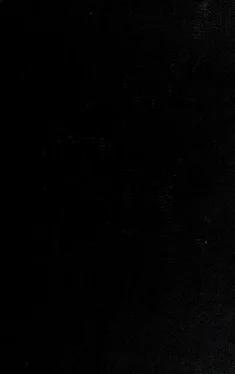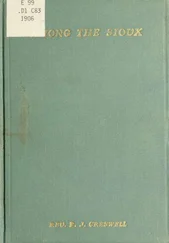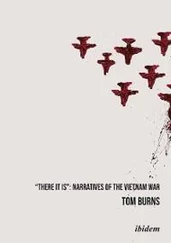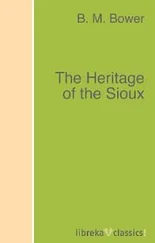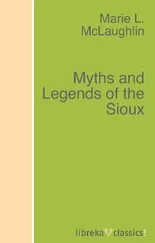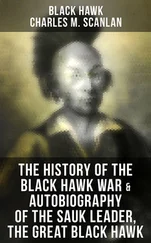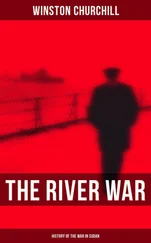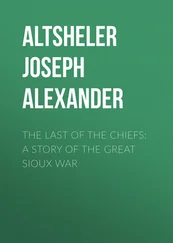Satterlee, P - Narratives of the Sioux war
Здесь есть возможность читать онлайн «Satterlee, P - Narratives of the Sioux war» весь текст электронной книги совершенно бесплатно (целиком полную версию без сокращений). В некоторых случаях можно слушать аудио, скачать через торрент в формате fb2 и присутствует краткое содержание. Жанр: Старинная литература, на английском языке. Описание произведения, (предисловие) а так же отзывы посетителей доступны на портале библиотеки ЛибКат.
- Название:Narratives of the Sioux war
- Автор:
- Жанр:
- Год:неизвестен
- ISBN:нет данных
- Рейтинг книги:4 / 5. Голосов: 1
-
Избранное:Добавить в избранное
- Отзывы:
-
Ваша оценка:
- 80
- 1
- 2
- 3
- 4
- 5
Narratives of the Sioux war: краткое содержание, описание и аннотация
Предлагаем к чтению аннотацию, описание, краткое содержание или предисловие (зависит от того, что написал сам автор книги «Narratives of the Sioux war»). Если вы не нашли необходимую информацию о книге — напишите в комментариях, мы постараемся отыскать её.
Narratives of the Sioux war — читать онлайн бесплатно полную книгу (весь текст) целиком
Ниже представлен текст книги, разбитый по страницам. Система сохранения места последней прочитанной страницы, позволяет с удобством читать онлайн бесплатно книгу «Narratives of the Sioux war», без необходимости каждый раз заново искать на чём Вы остановились. Поставьте закладку, и сможете в любой момент перейти на страницу, на которой закончили чтение.
Интервал:
Закладка:
This book made available by the Internet Archive.

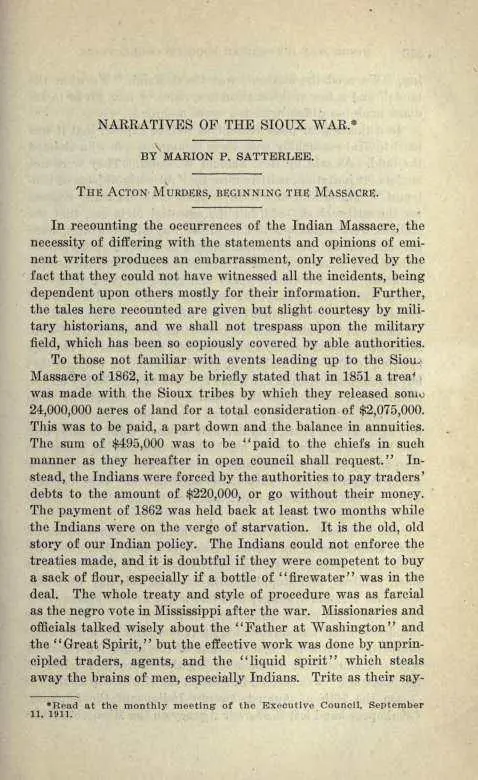
ing, "We need the money," was the demand, "We want the land ;' ' and a few reckless promises, more or less, given to Indians made no difference—few were recorded.
Lest this appear pessimistic, it is well to explain that it was hard to deal reasonably with these strange people who claimed the land. As said by Rev. Samuel W. Pond, "They were not models for imitation, neither were they properly objects of contempt." Those who care to investigate will find many reasons for the outbreak of 1862, but the essential facts are, that the Indians were obnoxious to and in the way of the whites, were preyed upon by conscienceless traders and boot-legging liquor-sellers, and were neglected by the government and its agents, till at last long smothered anger and acute hunger produced a storm that broke in fury, the opening event of which was the murders at Acton on Sunday, the 17th day of August, 1862.
In Acton township, Meeker county, on section 21, lived Robinson Jones, postmaster, Indian trader, and farmer. He was married to Mrs. Ann Baker the previous year, on January 14; but through some error her name appears as Ann Baker on the monument erected over the remains of the victims at Ness Cemetery. Living with them was Jones' niece, Clara D. Wilson, aged fifteen years, and her half brother, eight months old. The house was a two-story log building overlooking a marshy lake on the south, and was surrounded by heavy timber known as the Acton Woods, a part of the once famous "Big Woods." The Pembina-Henderson trail passed at the back of the house and along the west side.
About a half mile southeast of this place was a cabin of small size occupied by Howard Baker, a son of Mrs. Jones by a former marriage. His family consisted of ,a wife and two small children, and stopping with them on this day were Mr. and Mrs. Viranus Webster, who had a day or two before come from Wisconsin and were looking for a homestead. The house faced south and was surrounded by timber, and the above mentioned trail ran a few feet in front of the house from east to west. A monument, commemorating the "First Bloodshed of the Massacre," was erected in 1909 on the site of this cabin.
On the 10th of August, twenty Indians of the Shokpay (Shakopee) band left the Lower Agency on the Minnesota river
to hunt in the Big Woods and were divided into several parties. About nine o'clock on this Sunday morning, six of these Indians appeared at the Jones residence and made the usual demands for something to eat, and no doubt wanted whiskey in addition, as they knew that Jones kept it for sale. Chief Big Eagle, in an account given in Volume VI of this Society's Collections, names four of these Indians, as follows: Sungigidan (Brown Wing), Ka-om-de-i-ye-ye-dan (Breaking up), Nagi-wi-cak-te (Killing Ghost), and Pa-zo-i-yo-pa (Runs against something when crawling). Rev. S. W. Pond names two more; Hdinapi and Wam-du-pi-dan, as taking part. This treacherous pair had married into the Shokpay band. All of the six claimed the distinction of doing the killing, and all probably did shed blood, as five people were shot down, four of them within a few seconds of time. With the honor goes the disgrace of causing the loss of lands and money of all the Sioux in the state of Minnesota, and the massacre of about a thousand innocent people.
One of these Indians had borrowed a gun from Jones the preceding spring, and had not returned it as agreed. This act might now be deemed a trivial matter, but it was not so when people lived largely by hunting and guns were not on sale. Jones was a stalwart man and had no fear of, or regard for, the Indians. He refused to give them anything, and entered into an altercation with them over the borrowed gun. The Indians became angry and left, going toward the cabin where the Baker and Webster families were living. Knowing that the newcomers would be alarmed at the appearance of the Indians, Jones locked up the house, leaving the niece and her brother inside, and, taking his gun, went over to the Baker cabin, his wife accompanying him.
The Indians had made no demonstration when they arrived. Baker's little son had given them water, and the men had furnished them with tobacco ; but, when Jones came up, the quarrel over the gun was renewed and the Indians became very sullen. Finally, they wanted to trade guns, and incidentally to shoot at a mark. One of the Indians and Baker traded guns, the Indian paying three dollars boot in the trade. A target was fixed on an oak tree some six rods from the cabin, and a
trial of guns was made. Afterward all returned to the house, the Indians immediately reloading as if they were going on hunting. Mrs. Jones and Mrs. Baker, with the two children, were in the house, and Baker, after hanging up his unloaded gun, stood in the doorway, leaning against the casing. Mrs. Webster was in the wagon near by, getting out some articles wanted, and Mr. Webster, who had not been shooting with the rest, was carrying the things to the house from the wagon. Jones, evidently suspicious of trouble, had stepped around the, corner of the house to reload his gun. One of the Indians walked a distance on the road toward the Jones place, and the others were about the cabin door. Suddenly one of them, carrying his gun across his elbow and standing near Mr. Baker at the door, shot him through without lifting the gun from his arm. Immediately the shooting was participated in by all the Indians. Mrs. Jones was shot while sitting just inside the door, Mr. Webster in the dooryard, and Jones, who ran toward the woods, endeavoring to load his gun as he went, was shot down near a corncrib about three rods from the house. Mrs. Baker had her youngest child in her arms and was either pushed or fell into the cellar through an open trap door, where she stayed until the Indians left. Mrs. Webster in her fright fell down in the covered wagon and was not molested, nor was the oldest child who lay on the bed in the cabin. After the shooting the Indians went north on the trail, and, in passing the house of Jones, caught sight of Clara Wilson, shot her to death through a window in the pantry, and then continued on out of the woods. There were left alive, of the three families, Mrs. Baker and two children, Mrs. Webster, and the baby boy at the Jones place.
Contrary to all succeeding events of this kind, they did not mutilate the dead, nor steal or burn property, which leads to the conclusion that enmity toward Jones and his family was the real motive of the murders. They did not get any liquor at the Jones place, and liquor cannot be blamed for the tragedy, for the settlers found afterward that the house was not entered, nor the liquor kept there disturbed. The fact that Jones kept liquor and sold it to the Indians, led many of the settlers to think that the murders were simply the outcome of a
drunken brawl, but that there was no outbreak of a general nature, and some were probably killed while delaying flight on this theory. There are many stories of Indians appearing at different places in the neighborhood during the same afternoon, and probably some of the band of twenty hunters did appear; but it is certain that the six who did the killing were the ones who soon after made a show of arms and stole a team of horses, with which they carried the news of the murders to Little Crow at the Lower Agency that night. The war for the extermination of the whites commenced at daybreak next morning.
Four Indians came to the residence of Peter Wicklund, at Lake Elizabeth, a few miles from the Baker place, while the families of A. M. Ecklund, P. M. Johnson and Jonas Peterson were at dinner with the Wicklunds. Two came to a window and two at the door, and pointed their guns threateningly at the people. Mrs. Ecklund got up from the table and went to them, and, pushing their guns aside, demanded to know what they wanted. They told the men to come out as they wanted to talk with them. The men, four in number, went out with them a few rods from the house and were told that the Chip-pewa (Ojibway) Indians had murdered the Jones and Baker families at Acton. The settlers did not believe them and went back to the house, and the Indians went away. On going to feed the stock that night, it was found that the team of Mr. Ecklund had been stolen. Indians riding double on two horses, with a third holding to each horse's tail and running, were seen that afternoon going toward the Agency.
Читать дальшеИнтервал:
Закладка:
Похожие книги на «Narratives of the Sioux war»
Представляем Вашему вниманию похожие книги на «Narratives of the Sioux war» списком для выбора. Мы отобрали схожую по названию и смыслу литературу в надежде предоставить читателям больше вариантов отыскать новые, интересные, ещё непрочитанные произведения.
Обсуждение, отзывы о книге «Narratives of the Sioux war» и просто собственные мнения читателей. Оставьте ваши комментарии, напишите, что Вы думаете о произведении, его смысле или главных героях. Укажите что конкретно понравилось, а что нет, и почему Вы так считаете.
